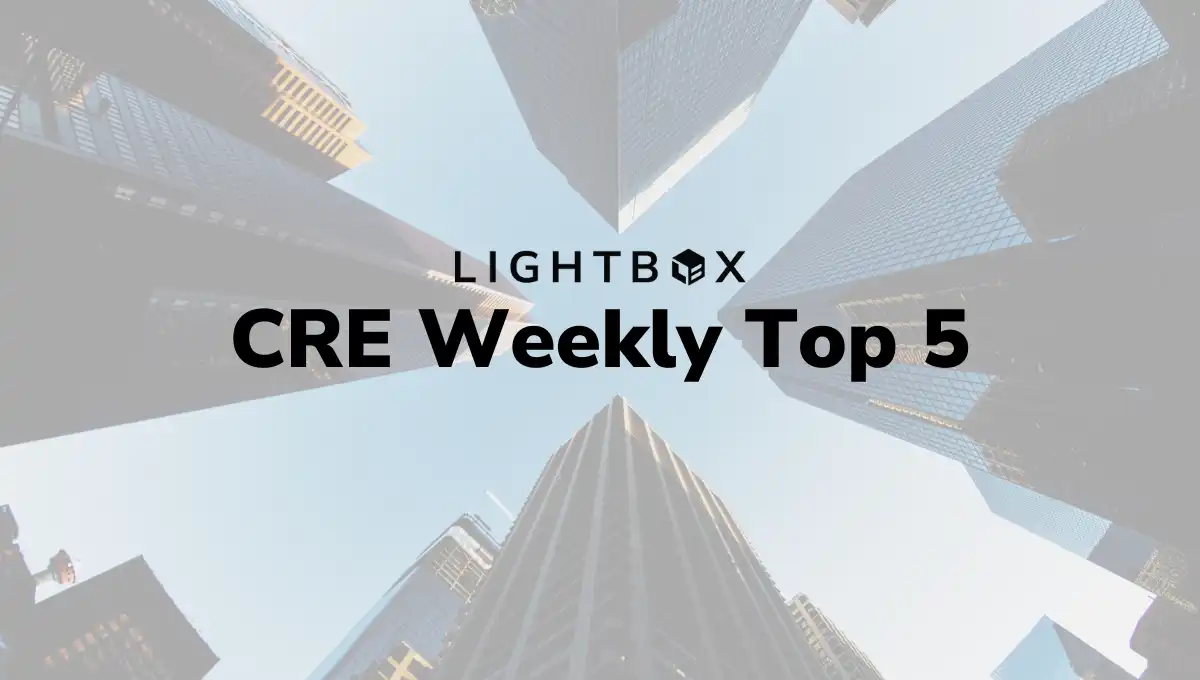Market news in the final week of summer centered on the release of additional earnings reports from major retailers, the implications of Fed Chairman Jerome Powell’s comments at last week’s Jackson Hole Economic Symposium, another uptick in home prices, an upward revision in Q2’s GDP numbers, and more metrics pointing to investors casting wider nets as they explore new acquisition opportunities.
Here’s our latest top 5 list of last week’s biggest commercial real estate (CRE) developments and why they matter:
- Fed signals that “The time has come.”
On every Fed Wednesday this year, the speculation would circulate: “Will Powell cut interest rates today? And if so, by how much?”
And the answer would come back: “Not yet.”
It seems those days are behind us. In his comments at the economic symposium one week ago, Powell all but proclaimed victory, noting that “My confidence has grown that inflation is on a sustainable path back to 2%,” and signaled that the time to start easing federal monetary policy has arrived.
Why It Matters: This first rate cut has been a long time coming. At the start of the year, many forecasters had predicted as many as six interest rate cuts this year so the first one will deliver a long-awaited step closer to lower capital costs. While the 25-bps cut that is widely expected is a moderate cut, the significance is greater as it signals that future rate cuts are ahead, and will likely spur a Q3 and Q4 uptick in lending and investment.
- Retail earnings beat expectations with warning of softer consumer spending ahead.
In the latest round of earnings reports, major retailers like Abercrombie & Fitch, Nordstrom, Urban Outfitters, and Best Buy exceeded earnings expectations, but also warned of cloudy skies ahead as shoppers exhibit more discretion in their spending. Discount retailer Dollar General failed to meet expectations, citing financial pressures of lower-income consumers and competitive pressures from omni-channel retailers like Walmart.
Why It Matters: The strength of major retailers is directly linked not just to broader economic health but also to demand for retail space, which struggled pre-COVID as e-commerce pressured brick and mortar retailers. High consumer spending levels, after the record-high savings during the pandemic, while positive, are not surprising, but there are concerns that this buffer shielding the economy could be fading as consumers become more cost-conscious and begin to pull back on the reins a bit.
- LightBox RCM data reveals highest investor interest in multifamily and retail.
LightBox RCM data on the number of nondisclosure agreements (NDAs) per property listing provides an interesting vantage point into the asset classes getting the attention of investors at this stage of the market recovery. A recent analysis revealed that the highest average number of NDAs signed per listing were for multifamily (140 per listing) and retail (113 per listing), both well over the industry average of 105.
Why It Matters: After several years of owners holding back on putting properties up for sale, the volume of listings is increasing and this latest NDA data shows that buyers are interested in reviewing opportunities, particularly in these two sectors. While multifamily is dealing with distressed loans originated in the days of much-lower interest rates, there is also a growing expectation that the slowdown in new development should bring stability and rent growth in some metros. In retail, certain subsectors like shopping centers and grocery-anchored centers are in high demand and the sentiment at the recent ICSC conference in Orlando reflected a sense that retail activity will pick up late this year and into 2025.
- Home prices continue to outpace inflation as $1M becomes the norm for a starter home in 237 cities.
Home prices continued their climb 5.4% in June to a new high, according to the latest Case-Shiller Home Price Index. Based on an index measuring prices in 20 of the largest MSAs in the U.S., the increase was an even higher 6.5%. In related news, Zillow reported that a $1 million starter home is now the norm in 237 cities versus only 84 cities in 2019.
Why It Matters: Rising home prices underscore America’s ongoing housing affordability crisis, and the importance of recent mixed use redevelopment projects that incorporate the construction of low-income housing units into the planning.
- Big employers thinking long-term with office leases in metros like Boston and Dallas.
Office leasing activity belies the narrative that employers are shrinking footprints, and in fact, suggest that the market may be turning a corner. Amazon signed a five-year renewal at Two Galleria Tower in downtown Dallas, taking a chunk out of the metro’s office inventory. The move was significant because it reflects an upsizing from 100K square feet to 240K. In Boston, Vertex Pharmaceuticals abandoned plans to relocate its headquarters and instead signed a long-term 15-year lease renewal for approximately 1.1 million square feet of office and life sciences space in the popular Seaport district.
Why It Matters: Major corporations like Amazon and Vertex are market influencers and send a sign of others that the trend is moving toward more office space, not less, signaling that the post-COVID trend of adjusting space needs downward may be waning. If this theory holds, the forecast office vacancy rates may be less dire than originally thought. The office sector is certainly not out of the woods, but these recent lease deals offer hopeful signs that demand for the right office space in the right locations could be improving.
For commentary on these CRE developments and more, tune in to the LightBox CRE Weekly Digest podcast.
Did You Know of the Week
Did you know that more than 35,000 of the principal investors in the LightBox RCM platform clicked on at least 10 property listings below $20 million in the first half of 2024? This signals a shift from big transactions to smaller ones as private capital and non-institutional investors get more active.
